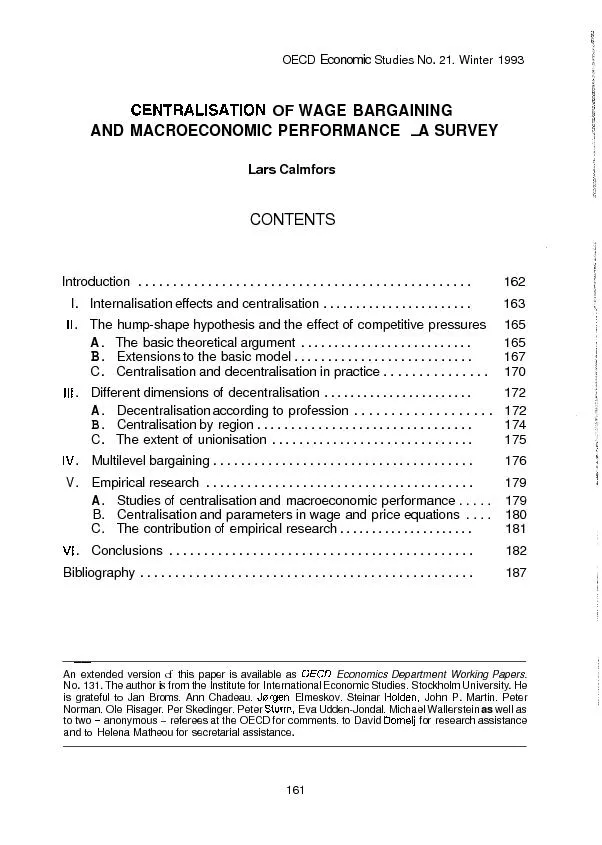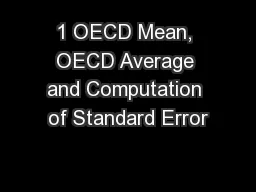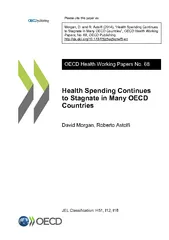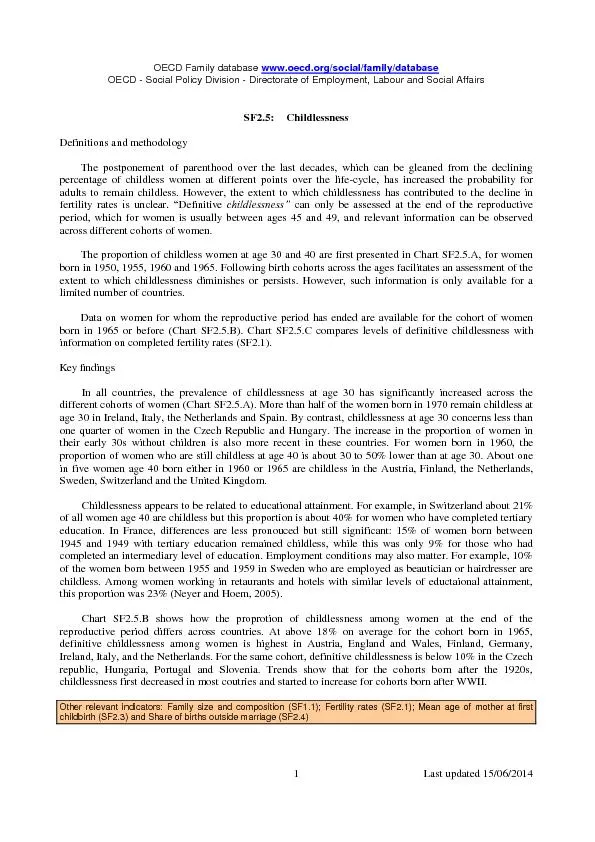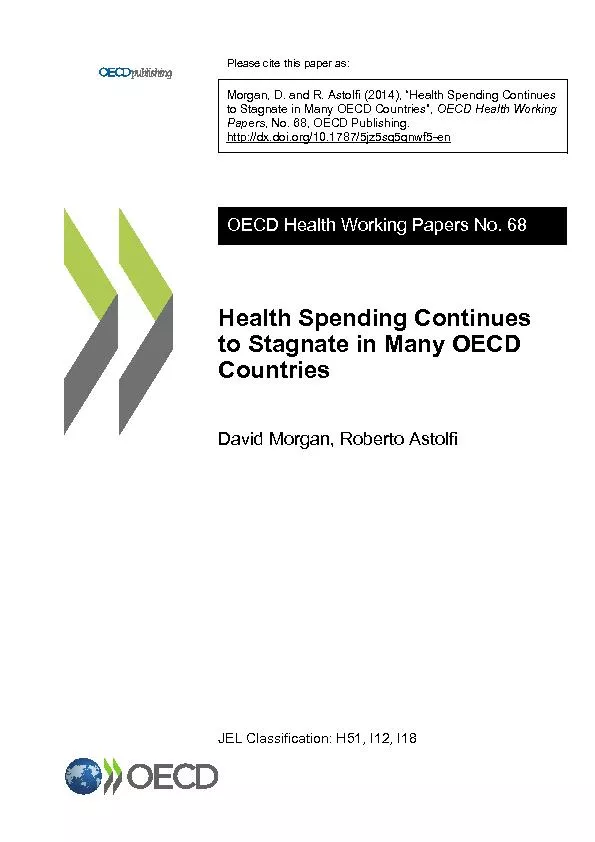PDF-OECD Economic Studies No . 21. Winter 1993
Author : stefany-barnette | Published Date : 2016-05-19
CENTRALISATION WAGE BARGAINING II shape hypothesis and the effect competitive pressures basic theoretical to the basic model Ill Centralisation by IV empirical research
Presentation Embed Code
Download Presentation
Download Presentation The PPT/PDF document "OECD Economic Studies No . 21. Winter 19..." is the property of its rightful owner. Permission is granted to download and print the materials on this website for personal, non-commercial use only, and to display it on your personal computer provided you do not modify the materials and that you retain all copyright notices contained in the materials. By downloading content from our website, you accept the terms of this agreement.
OECD Economic Studies No . 21. Winter 1993: Transcript
Download Rules Of Document
"OECD Economic Studies No . 21. Winter 1993"The content belongs to its owner. You may download and print it for personal use, without modification, and keep all copyright notices. By downloading, you agree to these terms.
Related Documents

